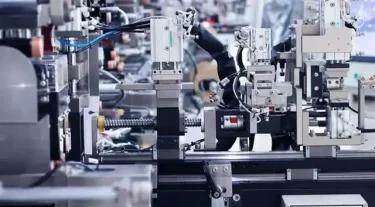
# Tape Production: Processes and Techniques in Manufacturing
## Introduction to Tape Manufacturing
Tape manufacturing is a complex process that involves multiple stages to produce adhesive products for various applications. From everyday household uses to industrial applications, tapes play a crucial role in modern life. The production process combines material science, chemistry, and precision engineering to create products with specific adhesive properties, durability, and performance characteristics.
## Raw Materials in Tape Production
The foundation of tape manufacturing begins with selecting appropriate raw materials:
– Backing materials: Paper, plastic films (PVC, PET, PP), cloth, or metal foils
– Adhesives: Rubber-based, acrylic, silicone, or specialty formulations
– Release liners: Silicone-coated papers or films
– Additives: Tackifiers, stabilizers, and other performance-enhancing chemicals
## Core Manufacturing Processes
### 1. Backing Material Preparation
The first stage involves preparing the backing material, which serves as the tape’s structural foundation. This process may include:
– Extrusion for plastic films
– Calendering for rubber-based materials
– Coating with primers to enhance adhesive bonding
– Surface treatments like corona or flame treatment
### 2. Adhesive Application
Adhesives are applied to the backing material using various techniques:
– Solution coating: Dissolving adhesive in solvent before application
– Hot melt coating: Applying adhesive in molten form
– Water-based coating: Using water as the carrier for adhesive particles
– Transfer coating: Applying adhesive to release liner first, then transferring to backing
### 3. Drying and Curing
After adhesive application, the tape undergoes drying or curing processes:
– Thermal drying ovens for solvent-based adhesives
– UV curing for certain specialty adhesives
– Moisture curing for some silicone-based products
– Controlled cooling for hot melt adhesives
### 4. Slitting and Rewinding
The final manufacturing stage converts large rolls into commercial sizes:
– Precision slitting to required widths
– Edge trimming for clean product edges
– Tension-controlled rewinding
– Quality inspection during winding
## Advanced Manufacturing Techniques
Modern tape production incorporates several advanced technologies:
### Multi-layer Coating
Some tapes require multiple adhesive layers with different properties. Sequential coating stations apply these layers with precise thickness control.
### Pattern Coating
Instead of full-surface coating, some applications require adhesive in specific patterns. This is achieved through:
– Gravure rollers with engraved patterns
– Screen printing techniques
– Spray application with masking
### Specialty Tape Production
Special applications demand unique manufacturing approaches:
– Double-sided tapes with carrier layers
– Foam tapes requiring lamination processes
– Conductive tapes with metal particle additives
– Medical tapes with skin-friendly adhesives
## Quality Control in Tape Manufacturing
Maintaining consistent quality involves multiple checks:
– Adhesion testing (peel, tack, and shear)
– Thickness measurements
– Tensile strength evaluation
– Visual inspection for defects
– Aging tests for long-term performance
## Environmental Considerations
Modern tape production focuses on sustainability through:
– Solvent recovery systems
– Water-based adhesive formulations
– Recyclable material selection
– Energy-efficient drying systems
– Waste reduction initiatives
## Future Trends in Tape Manufacturing
The industry continues to evolve with:
– Nanotechnology-enhanced adhesives
– Bio-based raw materials
– Smart tapes with embedded sensors
– Automated production with AI quality control
– Customizable on-demand production
From simple packaging tapes to high-performance industrial solutions, tape manufacturing combines science and engineering to create products that meet diverse needs across countless applications. As technology advances, tape production processes continue to become more sophisticated, efficient, and environmentally responsible.
Keyword: tape manufacturing
Comments are closed